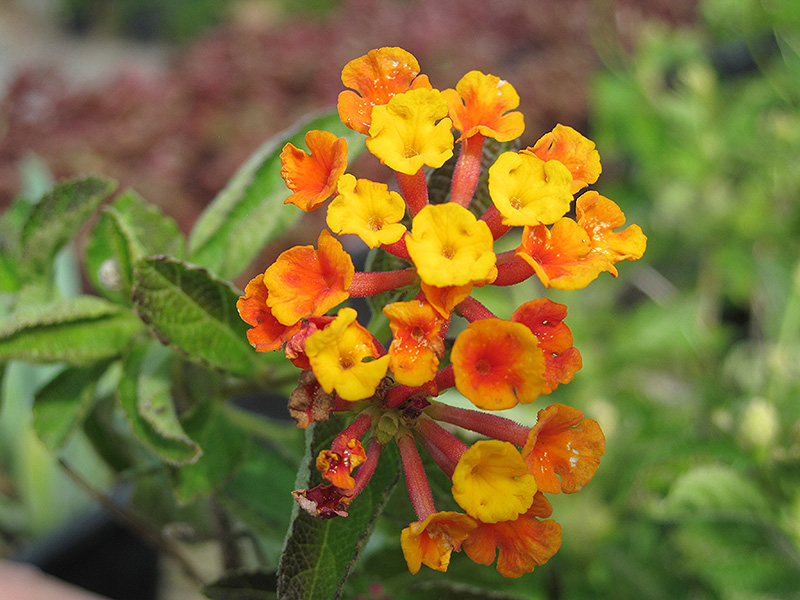Know Before You Go!
Get notified before our plants arrive in stores near you.
Plant Care Library

Radiation Bush Lantana flowers
Radiation Bush Lantana flowers
(Photo courtesy of NetPS Plant Finder)
Height: 5 feet
Spacing: 3 feet
Sunlight:
![]()
![]()
Hardiness Zone: (annual)
Brand: Monrovia
Description:
An excellent selection producing bright red-orange blooms with yellow centers; heat and drought tolerant; can be shaped as a low hedge or accent shrub; blooms continuously in frost free locations
Ornamental Features
Radiation Bush Lantana features showy cymes of red flowers with orange overtones and yellow centers at the ends of the branches from early summer to mid fall. Its textured pointy leaves remain green in color throughout the year.
Landscape Attributes
Radiation Bush Lantana is a multi-stemmed annual with a more or less rounded form. Its medium texture blends into the garden, but can always be balanced by a couple of finer or coarser plants for an effective composition.
This is a relatively low maintenance plant, and should not require much pruning, except when necessary, such as to remove dieback. It is a good choice for attracting butterflies to your yard, but is not particularly attractive to deer who tend to leave it alone in favor of tastier treats. It has no significant negative characteristics.
Radiation Bush Lantana is recommended for the following landscape applications;
- Mass Planting
- Hedges/Screening
- Border Edging
- General Garden Use
- Container Planting
Planting & Growing
Radiation Bush Lantana will grow to be about 5 feet tall at maturity, with a spread of 5 feet. When grown in masses or used as a bedding plant, individual plants should be spaced approximately 3 feet apart. Although it's not a true annual, this fast-growing plant can be expected to behave as an annual in our climate if left outdoors over the winter, usually needing replacement the following year. As such, gardeners should take into consideration that it will perform differently than it would in its native habitat.
This plant does best in full sun to partial shade. It is very adaptable to both dry and moist growing conditions, but will not tolerate any standing water. It is considered to be drought-tolerant, and thus makes an ideal choice for a low-water garden or xeriscape application. It is not particular as to soil type or pH, and is able to handle environmental salt. It is highly tolerant of urban pollution and will even thrive in inner city environments. This is a selected variety of a species not originally from North America, and parts of it are known to be toxic to humans and animals, so care should be exercised in planting it around children and pets. It can be propagated by cuttings; however, as a cultivated variety, be aware that it may be subject to certain restrictions or prohibitions on propagation.
Radiation Bush Lantana is a fine choice for the garden, but it is also a good selection for planting in outdoor pots and containers. Because of its height, it is often used as a 'thriller' in the 'spiller-thriller-filler' container combination; plant it near the center of the pot, surrounded by smaller plants and those that spill over the edges. It is even sizeable enough that it can be grown alone in a suitable container. Note that when growing plants in outdoor containers and baskets, they may require more frequent waterings than they would in the yard or garden.
A NetPS Plant Finder tool
